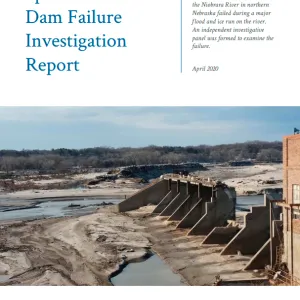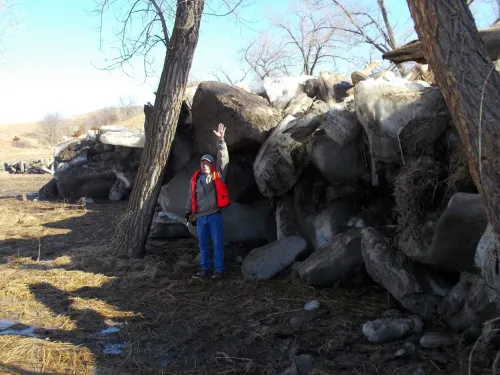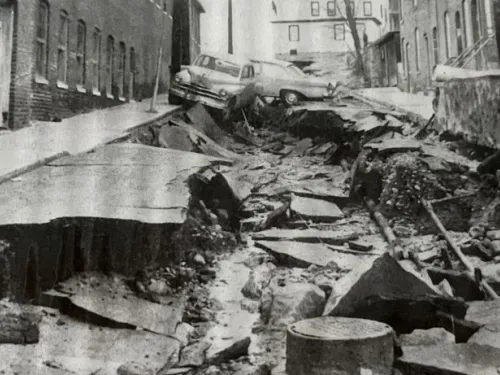Dams in cold regions should account for ice.
All states but Florida, Georgia, Louisiana, Mississippi, Alabama, South Carolina, North Carolina, and Hawaii experience freezing conditions that could impact a dam. Ice impacts can vary from frequent to rare and from nuisance to life-threatening. Cold, wind, and ice can impact a dam and its operators in the following ways:
- Slick surfaces can cause slips, falls, and injuries,
- Gates can freeze in position, causing a reduction in the dam’s ability to pass a major flood which could lead to premature overtopping and failure
- River dams can experience ice runs that can destroy gates, clog spillways and lead to overtopping dam failure.
All three of these impacts occurred at Spencer Dam on the evening of March 13-14, 2019.

Dam engineers should specifically document how the dam and appurtenances are to be safely operated in cold weather in their design summary and Operation and Maintenance (O&M) Manual for the dam. The current best reference is the U.S. Army Corps of Engineers' Manual No. 1110-2-1612 Engineering and Design - Ice Engineering.
It is difficult to evaluate the vulnerability of a dam to ice runs, frozen gates, and freezing conditions for five reasons:
- Dam examinations normally are performed in warm, non-winter conditions, so the inspector is not usually confronted with cold weather performance. Dam inspectors and engineers do not normally think of a dam in winter and early spring conditions with ice.
- Winter/early spring events are highly episodic: Years or decades may go by without a major event. People forget, and events that do occur often go undocumented.
- These events are relatively rare. There are many more internal erosion or flood event risks that are prioritized by dam engineers designing new dams or evaluating existing dams.
- While river hydrology and flood frequency analysis are commonly used to evaluate the vulnerability of a dam to flooding, ice jams and ice runs are complex, highly episodic and are not amenable to traditional modeling and frequency analysis.
- There has been relatively little technical research in this area.
Ice Hazards to Dam Operators
Dam operators in cold weather regions are exposed to winter freezing conditions during their job. OSHA has published guidelines for safely performing work in winter conditions [2]. Operators that must use elevated walkways to operate gates that can be particularly subject to wind, snow and freezing conditions. The following mitigation strategies should be used for dams in cold regions:
- Walking surfaces for dam operators should be either horizontal or stairs; inclined surfaces should be avoided.
- All horizontal surfaces should be pitched to provide drainage and prevent puddles from forming that could freeze and become a slip hazard to operators.
- Metal stairs with open anti-slip stair tread may be a good choice. Handrails should be provided on both sides.
- O&M Manuals should describe hazards from cold weather and how operators can mitigate risks, such as by including ice removal and wearing boots with good rubber tread/removable metal cleats.
Frozen Equipment
Ice buildup can interfere with the operation of a dam’s outlet works and hydropower intakes. Gates are critical to the safe operation of a dam – especially when passing a spring break up ice run or flood. Gates have many components that could be subject to freezing including: gate seals, lifting cables/chains, gear reducers and motors. When possible, equipment should be housed in weather-proof enclosures (such as NEMA 4). Equipment that must be exposed to the elements (like gate skins) can be fitted with electrical heaters. Some outlet works are fitted with bubbler systems to keep ice from forming on their upstream side. The ability to remove individual stoplogs or flashboards may be crucial to maximizing outlet capacity. Ice may damage or otherwise bind together fuse gates that are intended to freely release at a triggering pool level, or it may solidify earthen fuse plug spillways and prevent their intended erodibility.
River Ice Runs
Not only is static ice freezing on a gate a potential problem, river ice runs can damage or fail a dam. River ice runs and ice jams affect rivers in 30 states in mostly the northern tier of the country. Ice jams affected 200 towns in New Hampshire, Vermont and Maine in a 10-year period [1]. Ice runs happen in the spring when thick winter ice on the surface of a river is mobilized (often following a major rain event) and heads downstream. Ice jams are often highly episodic: years or decades may go by between major river ice runs, gradually eroding the level of concern in the minds of both dam owners and the downstream populace. An engineer evaluating a dam for ice run risk should interview people who have had long experience with the dam, search the internet for past episodes of ice runs on the river, and query local libraries and historical societies for past ice run events. Global climate change could change the location and frequency of ice run events.
Factors that affect the potential for ice runs include:
- Latitude of a dam – Dams on rivers in the northern tier of the U.S. are generally more likely to experience ice runs than dams further south.
- Unusually cold winter – Contributes to the formation of thicker ice.
- Rivers that flow north – The headwaters may have runoff before lower reaches.
- Rain on frozen ground – Dramatically reduces infiltration and increases runoff.
- Rain on snow – Water from rain events and snowmelt can swell rivers in early spring.
- Wide rivers – Wide rivers (even shallow ones) can create a greater volume of ice than narrow rivers.
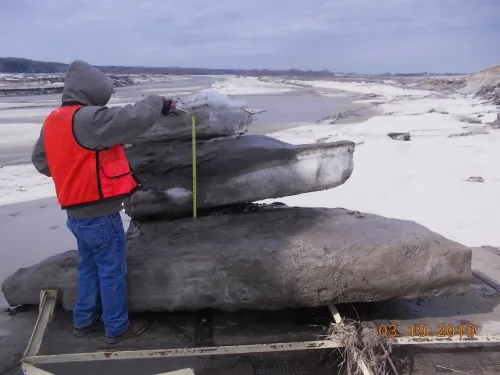
It is common for river dams in the northern tier of the U.S. to experience ice in the winter. River ice a few inches thick may easily pass through a dam’s spillway and gates. However, during particularly cold winters, ice on some rivers can grow to over two feet thick. When this ice breaks up in the spring and moves downstream in large blocks (often carrying logs and other debris) and it encounters an obstruction like a dam, it can clog spillways and lead to overtopping and failure of a dam [see the Spencer Dam Failure case study]. The primary mitigation measures for river dams subject to ice runs is to have:
- Very wide gate openings to allow for passage of ice
- Wide and ungated auxiliary spillways without piers
- Ice booms, which may offer limited ice run mitigation for thin ice conditions
- A system for monitoring upstream ice jam development and for alerting downstream occupants should unexpected conditions develop.
There are a number of structural methods that can be used to control river ice, such as sheet ice retention, breakup ice control, and ice diversion [5]. New dam designs or dam modification projects should consider ice hazards, vulnerabilities, and mitigation early in the feasibility and conceptual stages of the project, as well as in their O&M and Emergency Action Plans.
Reservoir Ice and Dam Failure
If a dam (river dam or non-river dam) in cold regions fails in the winter or early spring, it is likely to release ice from the reservoir. If it had been a particularly cold winter the individual blocks of released ice can be up to two-feet thick and may be traveling in accumulated masses of considerably greater depth (see photos). These ice blocks will be carried downstream during the dam failure and can cause major damage. Dam engineers who perform dam failure inundation mapping typically use modeling software that only models clear water flow. These engineers should evaluate and describe the potential for destructive debris and ice in their studies because, although modeling does not address ice, the presence of debris or ice is a potential reality and would dramatically increase the amount of destruction and loss of life potential. The dam’s Emergency Action Plan (EAP) and Warning & Evacuation Plans should also address the potential for a winter failure with large ice blocks coming downstream.
References:
This lesson learned was peer-reviewed by Boyd Howard, P.E., Gannett Fleming.

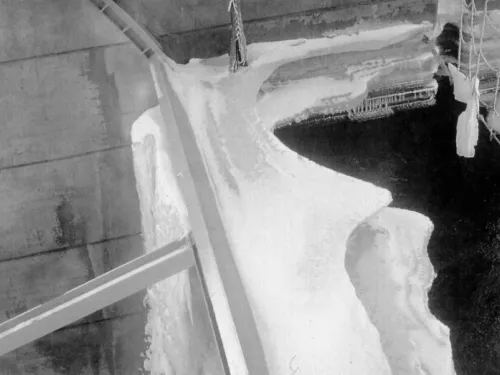
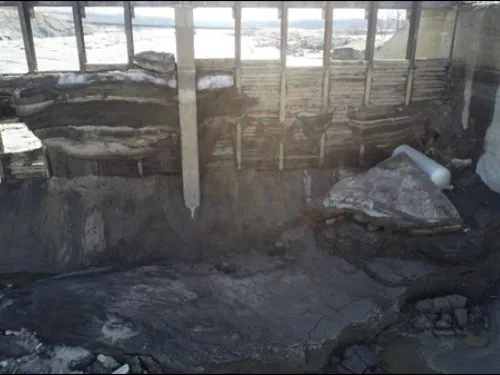

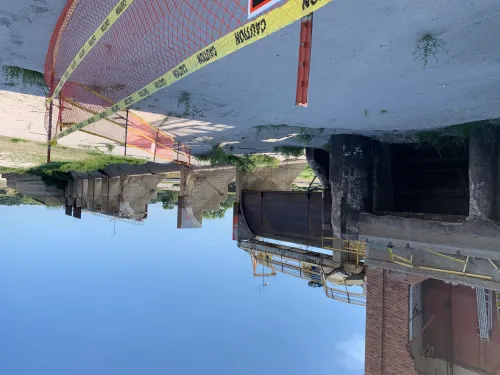

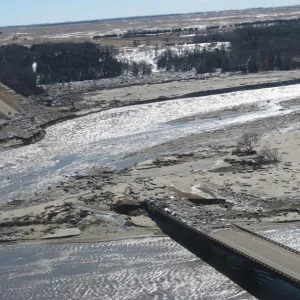
Spencer Dam (Nebraska, 2019)
Additional Case Studies (Not Yet Developed)
- Spaulding Pond Dam (Connecticut, 1963)
- Safe Harbor Dam skimmer wall (Pennsylvania, 1996)
- Big Porcupine Dam (Montana, 1939)
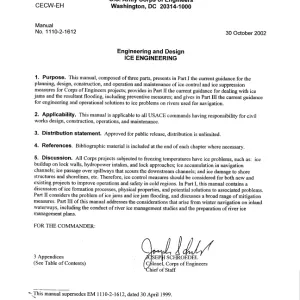
Engineering and Design: Ice Engineering

Flow Control to Manage River Ice
